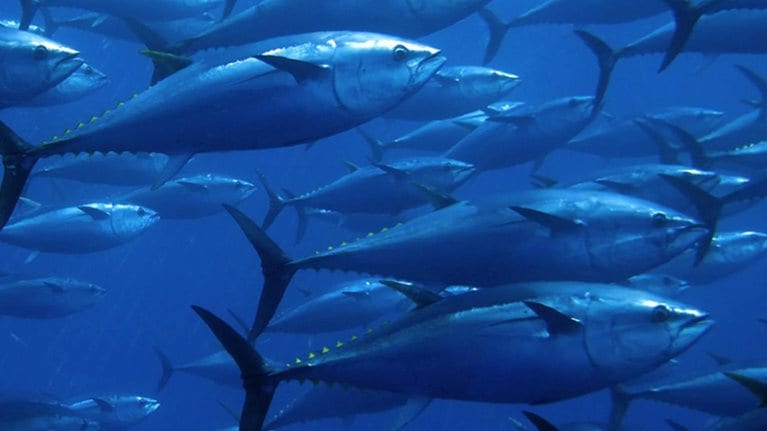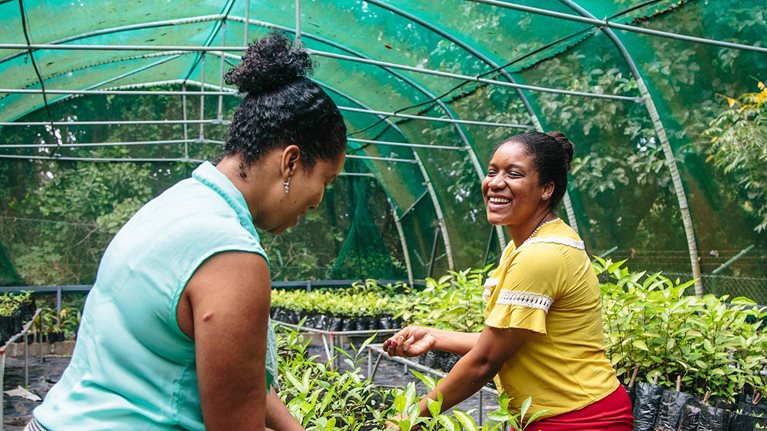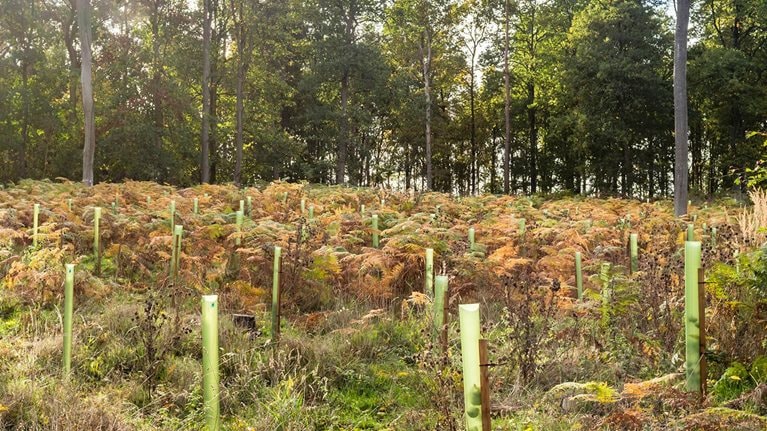“Investing is about reading the undercurrents of history,” says chief executive of Federated Hermes Limited, Saker Nusseibeh. Nusseibeh holds a doctorate in medieval history and, although a subject seemingly not related to finance, he believes it has influenced his investment strategies—by understanding the importance of cultural differences, geopolitics, and trends when doing business.1
Interpreting long-term trends is fundamental to planning investment strategies. With shifts in energy sources and agriculture, Nusseibeh believes that sustainability is now a key trend affecting society and that investors can be important actors in implementing change.2 They can do so through long-term, nature-positive investments that ensure a “just” net-zero transition.3 These are critical to the planet’s future, and Federated Hermes partners with companies for the long term to help them invest responsibly.
In an interview with McKinsey’s Tony Hansen, Nusseibeh shares how nature and biodiversity are now integral parts of Federated Hermes’ stewardship and how it strives to help its clients achieve net-zero and nature-positive impacts with tangible, market-based investments.
McKinsey: What is Federated Hermes’ strategic approach to engaging in natural capital and how does this relate to your approach to climate risk?
Saker Nusseibeh: Long-term investment is the way to add value when engaging in climate risk and natural capital. At COP21 in Paris in 2015, people realized that global warming was not just a political issue, it was also a financial issue. For example, regulators and governments would have to stop or reduce the extraction of fossil fuel at some stage and replace its use. Investing away from the reliance on carbon and into alternative or renewable energy emerged as a long-term trend.
The recognition of long-term trends is helpful for realizing long-term investment horizons. By COP26 in Glasgow in 2021, global warming had become part of mainstream thinking, and net zero and the 1.5° global warming limit were set as targets. Mitigating climate change became an established investment trend, not just in specific carbon-intensive or carbon-alternative industries, but across the board—in the infrastructure industry, component companies, and even the food and fashion industries.
At COP26, we brought scientists together to discuss the impact of climate and nature on the future. Doug Gurr, the chief executive of London’s Natural History Museum, said something along the lines of, “We have 150 scientists conducting the longest study into biodiversity in the world. If you’re worried about bad things happening, like hitting 4°C global warming, then you should really worry about the decline of biodiversity, because we're fast approaching a sixth mass extinction event.” That made it clear to us that there's another long-term horizon trend that we must look at—nature. This led to the launch of our Biodiversity Equity Fund and the UK Nature Impact Fund, as well as the extensive engagement activity on nature by our stewardship service, EOS.4
An important link between biodiversity and global warming is a just transition. But you need good long-term investments with everybody buying into the process for a just transition. In the developed world, there's no point doing something that we think is right when it may negatively impact people in emerging economies and lead to social tensions and disparity. Equally, there are whole economies in the developed world that rely on fossil fuels and will also need a just transition.
Another strategy we adopt is to constantly encourage and invest in people who are pushing boundaries. Sometimes nothing comes from it, but this approach is in our long-term interest as it helps build knowledge, which feeds into long-termism.
McKinsey: How are you incorporating nature risks into your business and decision making?
Saker Nusseibeh: There are three aspects. The first is the way we invest our clients’ money. We engage with businesses and have open discussions with boards and executives—not about next quarter’s or next year’s numbers, but about long-term strategic trends up to ten years hence that we think businesses should be aware of.
The second aspect is integrating material environmental, social, and governance (ESG) factors into our processes. Back in 2007, we looked at all decisions Federated Hermes Ltd had made since 1990, assessing the ESG factors to work out how much they added to or detracted from value. We found they were a value-add and have incorporated ESG, where relevant, into all our investments since then. Lastly, we recognize that there will be a demand for nature funds. As there will be clients who specifically want to target nature in their investments, we launched the Biodiversity Equity Fund and the Nature Impact Fund. However, we also recognize that other clients will be looking at this as an opportunity to make money.
Throughout it all, we encourage advocacy. We have published a policy statement on deforestation; we look at how to contribute significantly to industry best practice; we’re cochairs of the Finance for Biodiversity Foundation; and we are also involved in the Impact Investing Institute that looks at the impact that investments can have on nature.
McKinsey: What appetite do your clients (the asset owners) have for engaging in climate and natural capital investing, and how do you pitch the value of these offerings to investors?
Saker Nusseibeh: To engage on climate is much easier today because the issue has been established with policy and regulation, and people feel obligated to achieve net zero or meet the 1.5°C target. However, it's a bit more difficult to get them engaged on the topic of nature.
In the early day days of climate change awareness, there was a debate as to whether it was a value-add or an ethical investment
There is a broad consensus now that it is value-add. There is a similar debate today on nature. Now, we unequivocally regard nature as a value-add investment. Yet, it falls within the category of private markets because it's illiquid and has very long-term returns. In a market environment where people are hunting short-term yields, this poses a challenge. However, with our Nature Impact Fund, the argument for value-add is as strong as not acting on nature is already causing harm.
If you determine that global warming and biodiversity loss are real, especially in relation to how they might impact your long-term license to operate, then look at the impact on economics.
McKinsey: How can investors like Federated Hermes help shift global capital flows toward nature-positive outcomes?
Saker Nusseibeh: You must have two slightly different conversations at the same time. In the United States, because of the way the law is structured, you need to have a conversation about how nature-related investments are financially better in the long term. If you can do that, the onus is on the asset allocators to invest because of the impetus to fulfill their fiduciary duty.
The conversation in Europe is that, yes, the financial returns are better, but there is also the societal impact that you could have at home and abroad. That is a worthwhile investment technique because investments are giving voice to what people believe. So, it involves returns but also a vision.
McKinsey: How do you integrate ESG stewardship and investment across your products? What indicators do you look to identify if a company is serious (or not) about nature?
Saker Nusseibeh: The main criterion is to know a company over a long time. We often talk to the same company for ten, 15, or even 20 years. We have a specialist team that engages with companies to help them invest. As there are no KPI criteria for hitting targets, it's about a client’s vision, whether they have one, and whether they're moving toward it. Do they understand the problem, and do they have a detailed strategy?
We also look at what they're doing on a day-to-day basis. Does it make sense? Are they thinking about supply chains and the effects on their workforce and insurance policies? Then you can start talking about targets. We encourage our clients to follow the Taskforce on Nature-related Financial Disclosures’ (TNFD) assessments to help make the process easier by giving them a framework for discussion.
The final element is governance. There needs to be a governance structure to ensure that they'll stick to the process and won't be tempted by short-term actions. Market forces put immense pressure on management to get short-term returns, which might look good initially but could harm the business and the financial returns it can generate in the long term.
Ultimately, we are a steward of other people's money and of the companies that we invest in. It's through engagement that you can ensure that capital supports the movements you wish to enable.
McKinsey: What tangible, market-based investments in nature is Federated Hermes pursuing?
Saker Nusseibeh: In our Nature Impact Fund, for example, we are focused on investing in areas such as woodlands, the restoration of peatlands, and planting kelp on shorelines. We will also look to invest in small and medium-size enterprises (SMEs) that are active in the blue economy.
We are also looking at an investment opportunity that aims to create impact by persuading farmers to use biodiverse and biorich farming methods. And, we are working on a project with the Global Alliance for a Sustainable Planet to channel a small amount of public capital into two big projects that will form a cornerstone to collect a lot more private capital.
McKinsey: What advice would you give investors in financial institutions who are interested in sustainable investing?
Saker Nusseibeh: I'd give two pieces of advice—read the science and look at the markets. If you determine that global warming and biodiversity loss are real, especially in relation to how they might impact your long-term license to operate, then look at the impact on economics. These steps will give you a foundation for investing and then you can integrate them within your investment strategies. This is a long-term trend—you must include it fully in everything you do, not only as a firm but how you live as a person.


